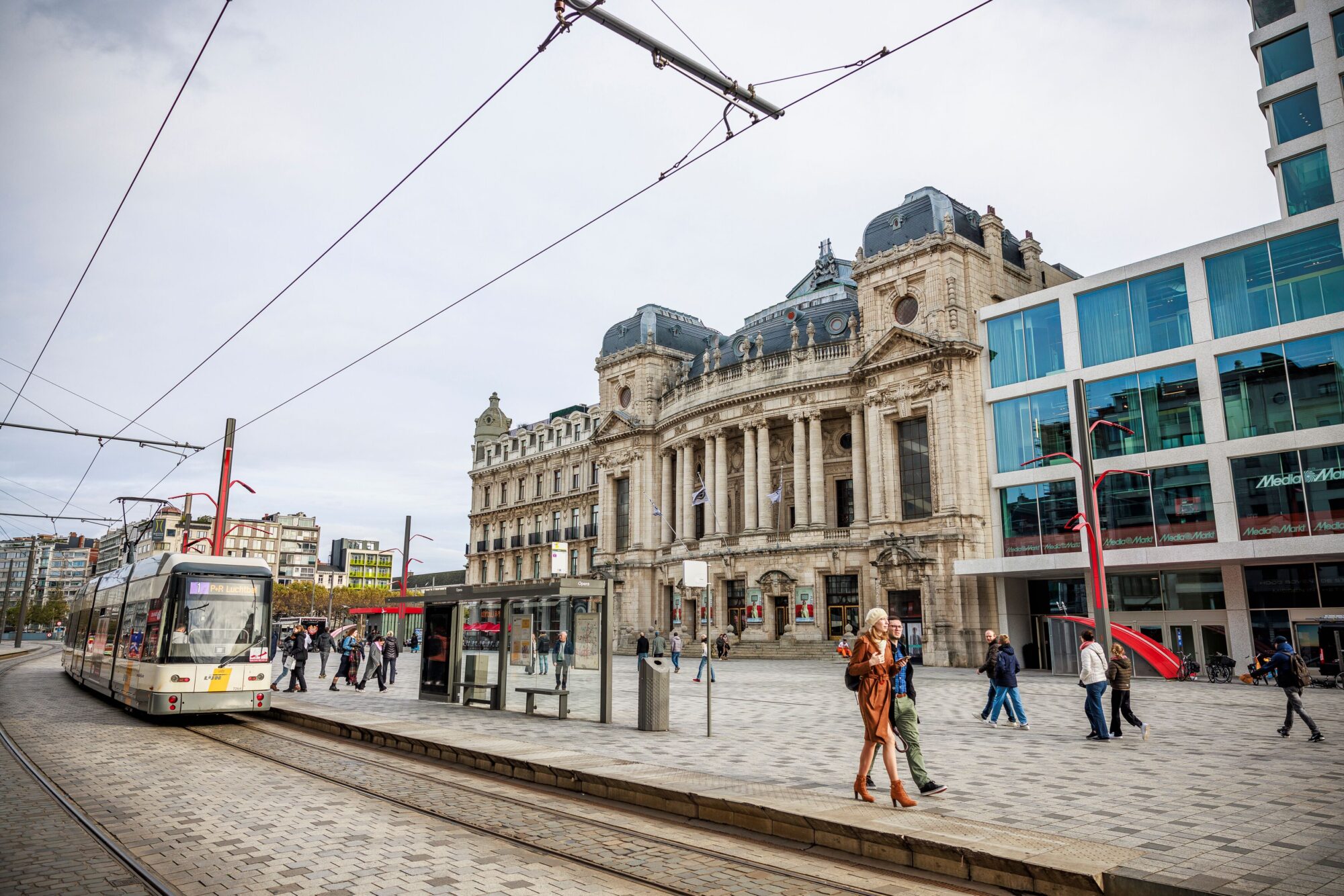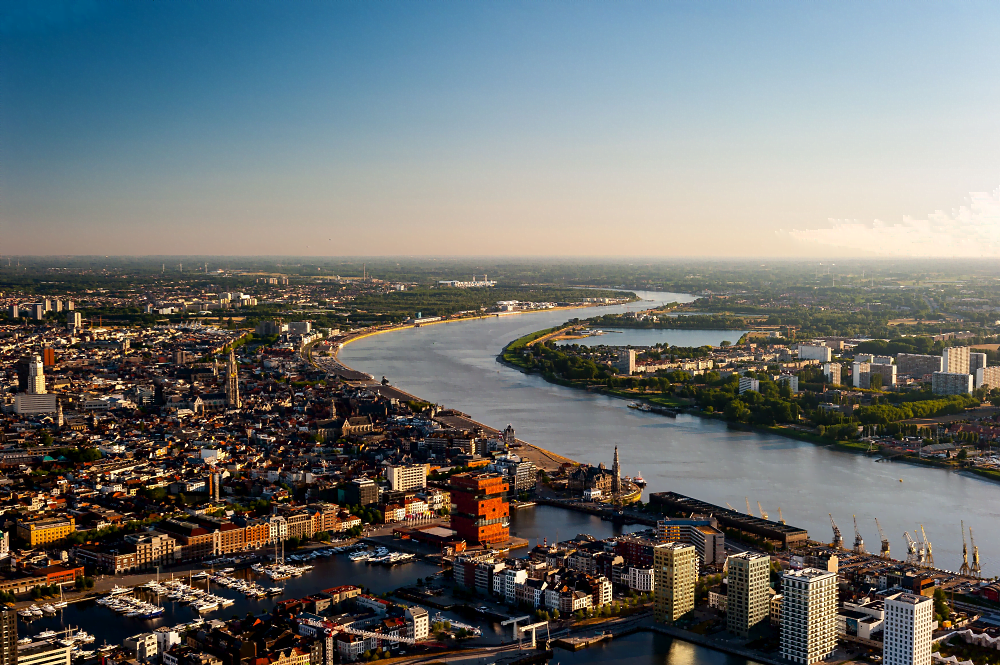Antwerp’s ambitious mobility strategy: A blueprint for sustainable urban transport
On 9 and 10 September, POLIS held its annual strategy meeting and teambuilding session in Antwerp, offering the perfect opportunity to explore the city's innovative approach to mobility.
From cycling through Antwerp’s extensive biking infrastructure to visiting key mobility hubs such as the Central Station, the Smart Ways to Antwerp programme was showcased in full force. The team participated in a 'mobility safari,' highlighting the city's diverse range of shared mobility services. This immersive experience not only deepened our understanding of Antwerp’s sustainable mobility goals but also inspired us as POLIS continues to shape its strategic direction.
Antwerp, the largest city in Flanders, with over 545,000 residents, 55,000 students, and 301,000 employees, stands at the crossroads of modern urban mobility challenges. As home to more than 101,000 companies and the second-largest port in Europe, the city’s mobility landscape is a balancing act. With growing freight transport demands and daily commuting pressures, Antwerp’s mobility strategy aims to keep the city accessible, liveable, and economically viable through a major transformation of its transport infrastructure.
To tackle these challenges, the city, together with port stakeholders and European-funded projects such as SCALE-UP, SPINE, and PIONEERS, is implementing a wide range of measures to stimulate a modal shift towards sustainable transport for both passenger and freight traffic. This strategy is a critical response to the congestion that threatens not only Antwerp’s urban vitality but also its role as a major European logistics hub.
Smart Ways to Antwerp: Shaping the future of city mobility
Antwerp’s dedicated mobility programme, Smart Ways to Antwerp, on the one hand, and the city’s mobility department on the other, represent the cornerstones of its transportation evolution. Through a combination of infrastructure upgrades, targeted campaigns, and innovative mobility solutions, the city is encouraging residents, commuters, and visitors to rethink how they move. The programme is built around enhancing sustainable transport behaviours, using digital platforms to inform, nudge, and incentivise citizens to opt for alternatives to private car use.
Key milestones in Antwerp’s mobility journey include:
- 2013-2018: A focus on coordinating infrastructure works and involving stakeholders through digital platforms to manage congestion and optimise traffic flows.
- 2019-2024: The Smart Ways to Antwerp initiative shifted its focus towards a broader modal change, encouraging employer engagement, launching a multimodal route planner, and creating a marketplace for new mobility solutions.
- Routeplan 2030: Looking ahead, the regional mobility plan sets ambitious targets, aiming for a 50/50 modal split in the city and the Antwerp Transport Region by 2030, reducing car usage in favour of walking, cycling, and public transport.
A city designed for bicycles and pedestrians
Antwerp’s approach to mobility is firmly grounded in encouraging active travel modes such as walking and cycling. During a recent cycling tour of the city, city representatives showcased how the expanding network of cycle paths and infrastructure upgrades is transforming the way people move through Antwerp. Notably, the city’s 16th-century inner city is undergoing a transformation to become more pedestrian-friendly, aligning historic preservation with modern mobility needs.
In parallel, Antwerp has significantly expanded its shared mobility options. From bicycles to scooters, residents and visitors can choose from a wide array of services designed to reduce reliance on private vehicles. This has been further supported by a series of mobility hubs, including the iconic Antwerp Central Station and several state-of-the-art Park and Ride (P+R) facilities, which act as gateways for those commuting into the city.
The Big Link: Connecting neighbourhoods with green spaces
A highlight of Antwerp’s ongoing mobility transformation is ‘The Big Link’ project, a sweeping initiative designed to connect neighbourhoods on both sides of the city’s Ring Road. The project, which integrates new infrastructure such as the Oosterweel connection and seven Ring Parks, is creating a seamless network of green spaces, quieter streets, and healthier air quality.
A key feature of this development is the construction of a new Cycling Bridge, a testament to Antwerp’s commitment to improving accessibility for cyclists and pedestrians. The city is determined to provide safe and sustainable alternatives that not only reduce car dependency but also enhance urban liveability.
Pioneering digital solutions for mobility
Antwerp’s embrace of digital solutions is pivotal to its mobility strategy. With real-time mobility data accessible through the Smart Ways to Antwerp route planner, users can plan routes, find accessible transport options, and explore shared mobility services all in one platform. Moreover, the city’s route planner integrates various transport modes into single, user-friendly services, ensuring that residents and tourists alike have access to convenient and sustainable transport options.
Looking to the future: A city for all
Antwerp’s mobility strategy extends beyond simply reducing congestion or improving infrastructure. It is a holistic approach that addresses broader social and environmental goals. By promoting low-emission transport options, the city aims to cut down its carbon footprint, while initiatives such as inclusive mobility ensure that solutions are accessible to all residents, regardless of income or physical ability.
The city's focus on stakeholder engagement—whether through collaborations with European projects or by involving local communities and citizen associations in planning—ensures that these mobility solutions are not only top-down but also reflective of the needs of the city’s diverse population.
Conclusion
Antwerp’s mobility transformation is a model of how cities can rise to the challenge of balancing urban growth with sustainability. From the ground-breaking Smart Ways to Antwerp programme to innovative digital tools and inclusive policy frameworks, Antwerp is positioning itself as a leader in sustainable urban transport. Through this forward-thinking approach, Antwerp is creating a future where both residents and visitors can enjoy a vibrant, accessible, and liveable city.

